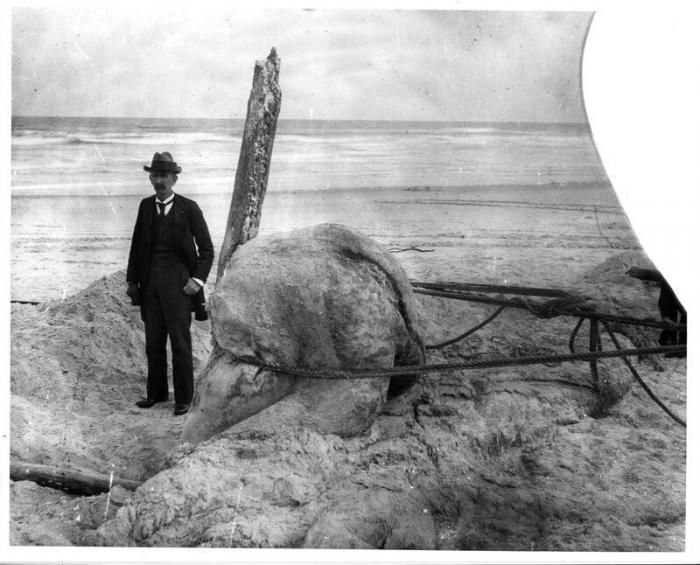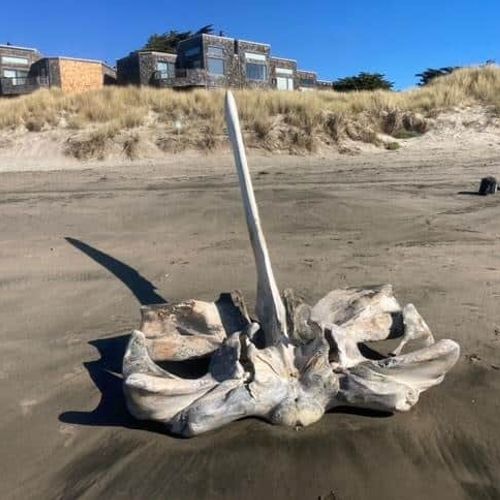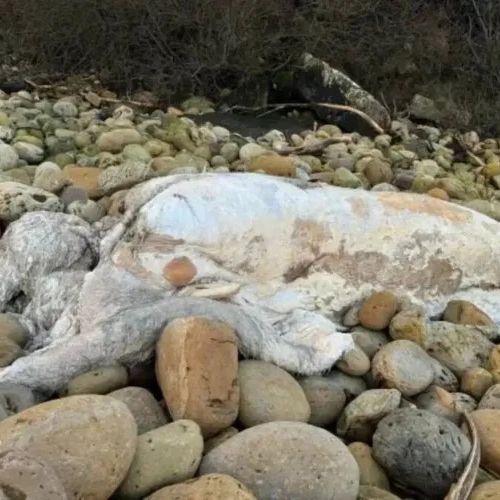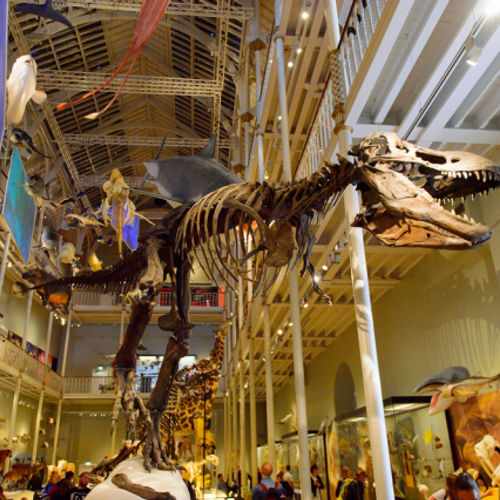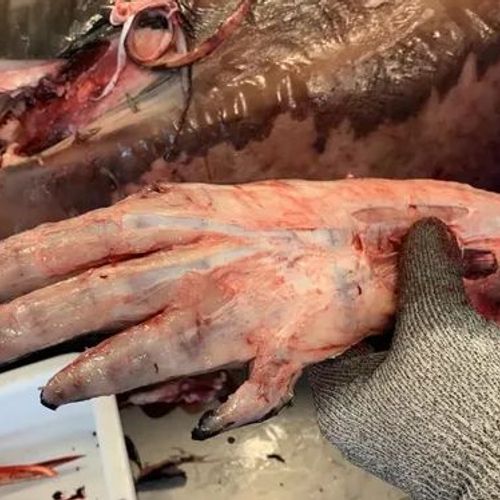
| Added | Tue, 16/04/2019 |
| Источники | |
| Дата публикации | Tue, 16/04/2019
|
| Версии |
In late November 1896 two American boy from the Florida town of St. Augustine was rolling on the coast, when he saw that huge monster, half buried in the sand. The boys immediately reported the only scientist in the city — physician DeWitt Webb.
The doctor got to the carcass the next day and saw the incredible: it was not a whale, and a pale pink mass of half-decayed flesh. She had nothing that would even slightly hint at the origin: no bones, no eyes, nor any shape. Webb estimated that the carcass weighs about five tons, and decided that it was a giant octopus. The man took some tissue samples, and under his direction the body was moved deeper into Florida, where it became a real attraction: hundreds of people came to see and to be photographed against the monster of St. Augustine.
What happened with the discovery of the next is unknown: probably because of the incredibly strong smell that she exuded, she was buried, and possibly drowned in the sea.
Monster from Florida was given the name "giant octopus" (also known as "giant octopus"). Actually, in theory there were two kinds of giant octopus: the actual, real giant octopus that lives at the bottom of the ocean and usually does not weigh more than 30 pounds, and is a hypothetical monster that attacks ships. In fact, Webb decided that the beach threw the monster: how else could I explain the five-ton carcass without the slightest sign of a backbone?
Confirmed the theory of Webb, and Professor of Zoology Edison Verrill emery, who at the time was the chief authority on mollusks in the scientific world. Scientists could not calm down with the discovery of over a century. The samples collected Webb, many times explored.
In the 1970-ies analysis confirmed that a Florida monster was in fact an octopus. Then it was a fantastic discovery: the scientists came to the conclusion that the length of the tentacles of this giant reached 30 meters.
Another analysis conducted in the 1980-ies, and he also confirmed the existence of monsters. But this theory is still disproved: in 1995, made possible the biochemical analysis of the samples, they were studied in more detail. In the end, it turned out that the mass is the remains of a whale. In fact it is the fat that is released during the decay of the body.
But finds, like the Florida monster, was washed ashore around the world at different times. All of them called globsters. Usually it is the flesh, which there is absolutely no defining characteristics. It globster strengthened the faith of the sailors that at the bottom of the sea live monsters that are attacking ships. It's about these monsters and there were stories for thousands of years.
By the way, in their existence and some believe today: cryptozoologists believe that these remains are still unknown to science species of animals. Moreover, there is even a theory that they live in the sea and in the earth, the remains are often found half-submerged in the sand. So that's the perfect justification got this terrible creature.
Florida monster was the first officially confirmed glossterm, which was photographed and explored, but known to science and other stories monsters.
So, there Transacci monster thrown in 1808, on the coast of great Britain, he was considered nothing more than a sea serpent.
Another famous monster — globster, Trunko, which nailed on the beach South Africa in 1924. Even then there were witnesses. People saw an unknown creature that resembles a polar bear, and for several hours fought with the whales. The body, covered with hair, and later washed ashore. However, finding the same detail and could not study.
Still, already in 2000-ies have found that wool was not: in fact, it was the fabric.
And in the twenty-first century, such discoveries have always created fantastic theories. So, in 2003 on the coast of Chile have discovered a giant body with a width of 12 meters and a weight of 13 tons. He was not immediately identified, but later still found that it was the carcass of a sperm whale.
Translated by «Yandex.Translator»
Новости со схожими версиями
Log in or register to post comments



